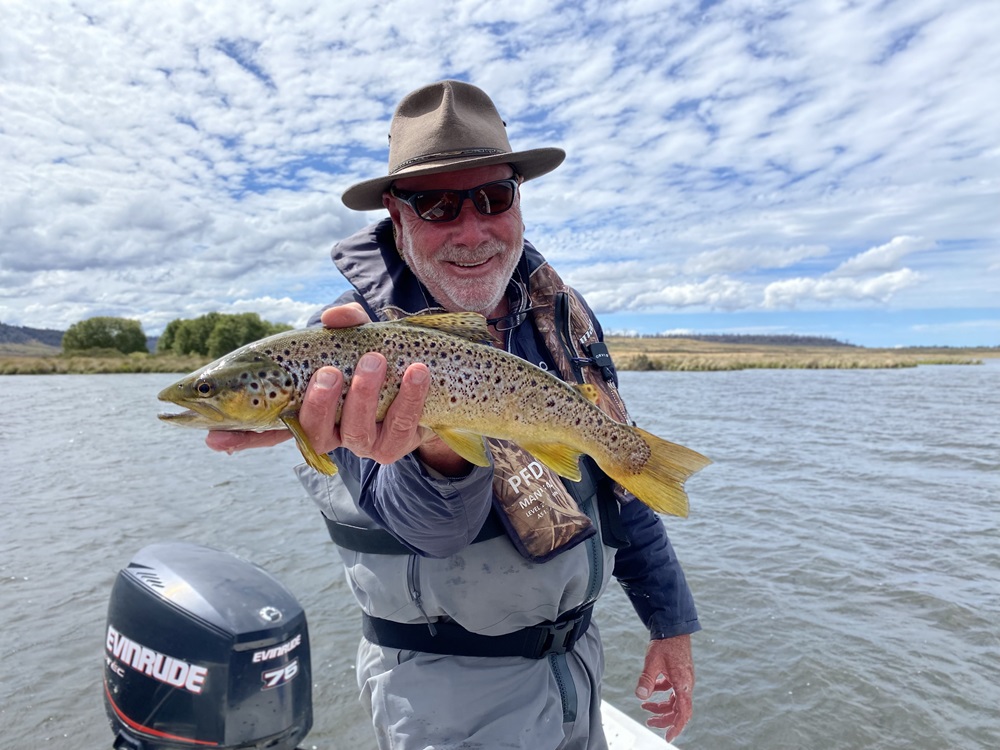
Craig recommends a pattern that’s very effective on mayfly lakes in bright conditions.
David Scholes wrote ‘Fly-Fisher in Tasmania’ in 1961, which also happened to be the year I was born. In the first page, David writes. “No other factor influences fishing in Tasmania more than the weather, and if an angler can successfully foretell its likelihood before he sets out, indeed actually choose his place of fishing according to his forecast, he is a clever fellow and will have far more consistent and exciting sport than the average angler.” He continues, “Before we go fishing, therefore, our first consideration must be the weather.” David’s observations are as relevant today as they were six decades ago.
The last couple of trout seasons in the highlands of Tasmania have produced a lot of very ‘even’ weather; those frustrating half cloud and half sun days which are very pleasant for angler comfort, yet not ideal from a fishing perspective. Most angler would prefer either full sun, which should produce good polaroiding to trout feeding on terrestrial insects, or fully overcast days best suited to mayfly hatches.
As a result of this prevailing ‘in between’ weather, plus less than accurate weather forecasts, for the last couple of seasons, I’ve often found myself forced to fish lakes when I considered the weather to not be ideal for that location.

On one such occasion, I found myself on Little Pine Lagoon in full sun with no breeze. In short, disastrous conditions to fish the Pine. Around midday, a few duns started hatching, and I was having no success getting the attention of the trout, despite making what I considered to be some good presentations. In frustration, I found myself gazing into my fly-box for inspiration. I’m sure all flyfishers have found themselves in this situation!
The sun glinted of a flashy claret shuttlecock I had tied some years previously as a prototype and not got around to trialing, so on it went. By the end of the day, I had caught 12 good fish on it, and in weather I consider totally unsuited to the Pine.
I went on to share this pattern with fishing mates, who also reported good results with it in bright conditions. Fishing with my friend Fiona one day, she mentioned that the fly looked a bit like a witch’s broom, hence we christened the fly the Nimbus 2000, after Harry Potter’s magic broomstick. It has gone on to be my go-to fly on mayfly lakes in bright conditions.
As with all flies there is no such thing as a silver bullet. However, the Nimbus 2000 is one to keep in mind next time you find yourself on a mayfly lake in bright conditions.
Materials
Hook – size 12 or 14 medium wire wet fly hook.
Thread – Black 8/0
Tail – Brown cock hackle
Rib – Thin pearl mylar.
Dubbing – Dark claret possum fur
Wing – Dark possum tail
Tying instructions
- Tie in a clump of brown cock hackle two-thirds the length of the hook shank.
- Tie in the pearl mylar.
- Cut a generous clump of possum tail, and stroke out all the under-fur, leaving the long stiff guard hairs.
- Tie these in protruding over the hook eye.
- Dub in a fine carrot-shaped body with the possum fur.
- Run 3 to 4 turns of mylar up the body.
- Dub in the thorax.
- Progress your thread to between the wing and the eye of the hook, and put in multiple wraps of thread, forcing the wing away from the hook shank on a 45-degree angle.
- Finally, whip finish, and cut the wing to length using a pair of curved scissors.
(Note: It can be worth tying some flies with bushier wings to make them more buoyant and visible for rough conditions.)
How to fish the Nimbus 2000
Being a highly visible fly, I like to fish the Nimbus on the point of my cast, with one or two less visible emergers on the droppers – a bit like the washing line technique. Even though you may not be able to see the emerging nymphs, any movement between the Nimbus on the point and the end of the fly-line should be responded to.
Given the way the Nimbus hangs in the water, it is also useful to tie a trailing nymph off the bend of the hook.












